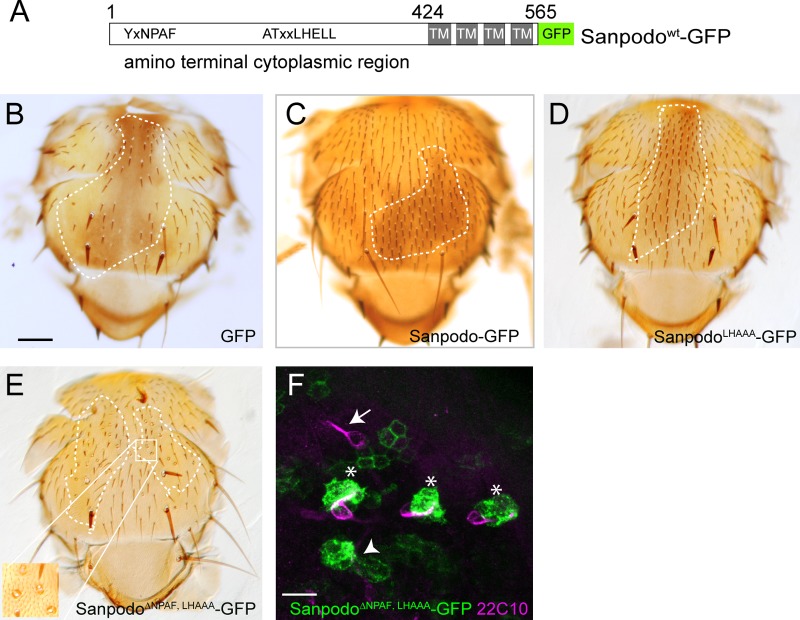Figure 2.
Sanpodo NPAF and ELL motif are required for Notch inhibition in pIIb cells. (A) Schematic of Sanpodowt-GFP transgene with NPAF and LHELL motifs shown. (B–E) scabrous-Gal4–driven expression of wild-type and mutant Sanpodo transgenes in sanpodoc55Sb e mutant clones using the MARCM system (approximate clone borders are marked with dotted line). Bar, 200 µm. (B) GFP expression fails to restore the wild-type bristle pattern to the thorax in sanpodoc55Sb e mutant clones, whereas both Sanpodowt-GFP and SanpodoLHAAA-GFP expression (C and D) fully rescue the sanpodo mutant phenotype. (E) SanpodoΔNPAF-LHAAA–GFP expression suppresses the bristle loss phenotype associated with the Sanpodo mutant, but a number of rescued bristles exhibit supernumerary socket cells (inset). (F) Sensory organs from pupae Expressing SanpodoΔNPAF-LHAAA-GFP (green) in sanpodoc55Sb e mutant clones using the MARCM system, labeled with the neuronal marker 22C10 (purple). Bar, 10 µm. Single 22C10-positive neurons are visible in most GFP+ sanpodo mutant sensory organs (*), as well as outside the clone region (white arrow), but are absent in others (white arrowhead).

